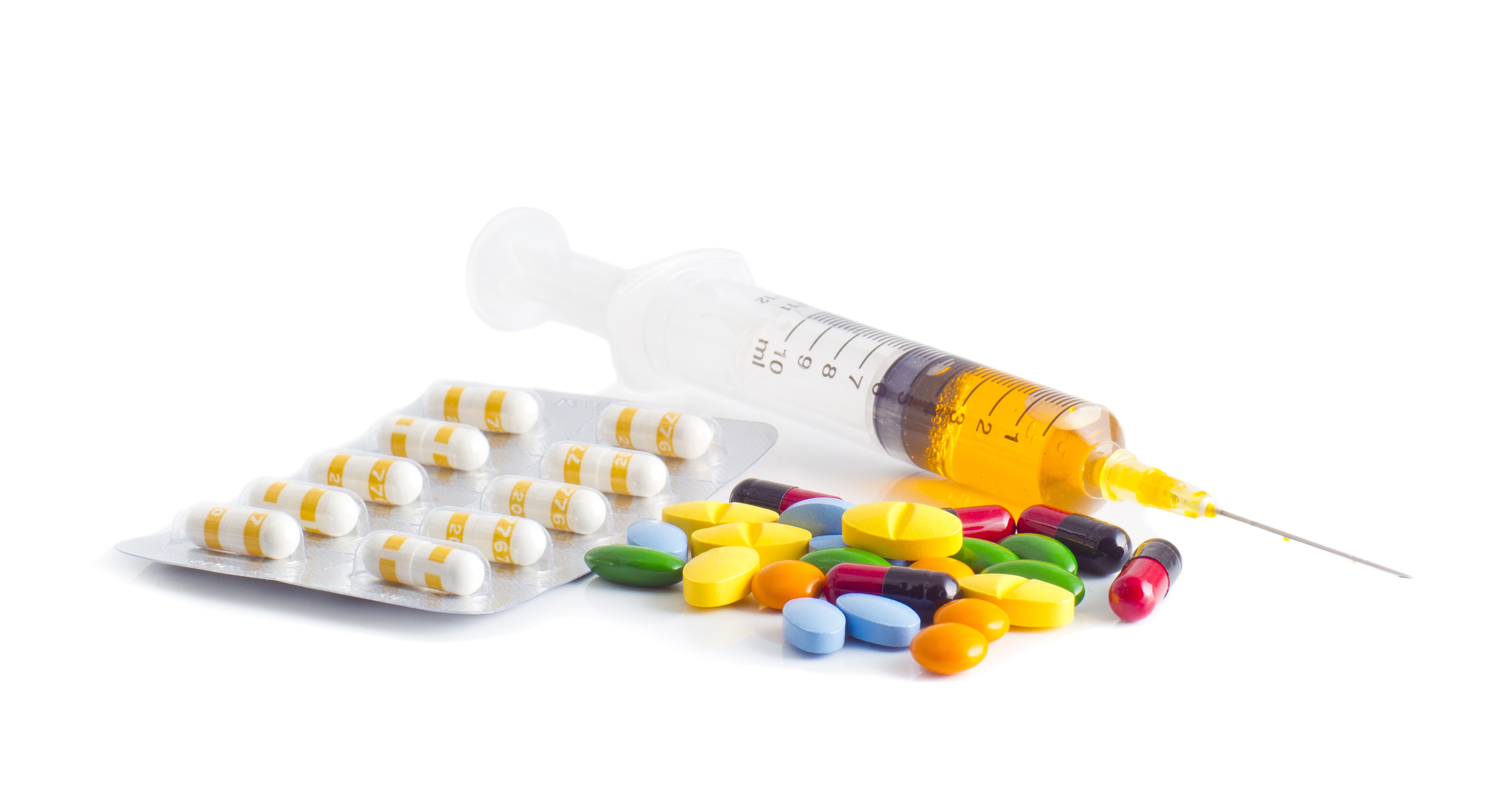By combining already established drugs in lower doses, PLEOTHERAPY shows promise in improving targeted therapy and reducing costs.
Pharnext, a clinical-stage biopharmaceutical company that develops therapeutics for neurodegenerative diseases for which there currently are no cures and existing therapies available, has pioneered a new paradigm called PLEOTHERAPY.
It centers on a blending of drugs previously established and targeted for the treatment of certain disorders that, when combined in optimal lower doses, can be repositioned and formulated into new, effective therapies for fighting other maladies, such as Alzheimer’s disease.
To learn more about this new strategic approach to drug development, Pharmaceutical Processing asked Pharnext’s Rodolphe Hajj, Ph.D., Chief Pharmacology Officer, about the PLEOTHERAPY concept and the company’s plans to further develop the breakthrough process. Below are edited excerpts.
Q: Please explain the PLEOTHERAPY approach to fighting diseases and what led to the development of this new biopharmaceutical strategy.
Rodolphe Hajj:
Pharnext was founded in April 2007 by a group of experienced entrepreneurs and renowned scientists, including our CEO Professor Daniel Cohen—a pioneer of modern genomics.
Pharnext’s innovative PLEOTHERAPY R&D approach is based on the multifactorial nature of diseases (even when monogenic) as well as network pharmacology. This technological platform allows the identification of the thousands of molecules possibly involved in a disease, which is called the disease network.
From this molecular map generated from big Genomic Data, we then systematically deduce novel and safe synergistic1 combinations of repositioned drugs that targets simultaneously several disease pathways. These novel therapeutics, called PLEODRUG, are then developed at new optimal lower doses and under new formulations for optimal effect. They offer several key advantages, including high efficacy, excellent safety, fast development timelines as well as robust intellectual property.
PLEOTHERAPY is universally applicable to any disease or compound, regardless of development stage or lifecycle status, and has been endorsed by world-renowned scientists and institutions.

Pharnext headquarters.
Q: For the PXT3003 therapy designed to fight Charcot–Marie–Tooth disease (CMT), a hereditary motor and sensory neuropathy, what drugs were combined, or repositioned, in the formulation?
Hajj:
PXT3003 is our lead PLEODRUG currently in Phase 3 development for the treatment of Charcot-Marie-Tooth disease type 1A (CMT1A) in adults. PXT3003 is an oral fixed-low dose combination of baclofen, naltrexone hydrochloride, and D-sorbitol given twice daily.
It has multiple main mechanisms of action: an inhibition of PMP22 gene overexpression associated with a synergistic myelination improvement, direct nerve protection, and additional positive effects on: muscle cells, neuromuscular junctions, and immune cells. Positive data from the PXT3003 Phase 2 program served as proof-of-concept for this novel, PLEOTHERAPY approach to drug development.
Q: When is Phase 3 for PXT3003 expected to conclude and, if successful, when might it be submitted for regulatory approvals?
Hajj:
Top line results from our ongoing pivotal Phase 3 trial evaluating PXT3003 for the treatment of Charcot-Marie-Tooth disease type 1A (CMT1A) in adults are expected in the second quarter of 2018. We anticipate filing for approval in the first quarter of 2019.
Q: Alzheimer’s disease has been a primary target thus far with the development of PXT864. Why was Alzheimer’s selected? Are there other potential indications (in addition to Alzheimer’s)?
Hajj:
Despite decades of research, there remains a significant need for Alzheimer’s treatments as there are no treatments capable of altering the progressive course of this terrible disease. Current therapies are only symptomatic and associated with side effects, thus improving those features would be a major milestone for patients with Alzheimer’s.
PXT864 acts through a new mechanism of action by targeting metabolic imbalance in the brain of patients suffering from neurodegenerative diseases. In 2015, Pharnext reported positive preclinical data showing that in two different Alzheimer’s rodent models, PXT864 alone demonstrated not simply additive, but synergistic positive effects.
Multiple altered markers of Alzheimer’s were synergistically and consistently improved and/or normalized. Based on those encouraging preclinical data, we decided to move forward and launch our Alzheimer’s Phase 2 program.
Data from the Phase 2 trial demonstrated that treatment with PXT864 may slow the progression of cognitive disability in patients with mild Alzheimer’s disease. The results, featured in December 2016 at the Ninth Clinical Trials on Alzheimer’s Disease (CTAD) Conference in San Diego, provide encouraging evidence that PXT864 may be an entirely new approach in the treatment of Alzheimer’s.
We look forward to advancing the clinical development of PXT864 as we strive to bring an efficacious treatment to people suffering from Alzheimer’s disease. PXT864 has also high potential in other diseases such as Parkinson’s disease, Amyotrophic Lateral Sclerosis (ALS), and other rare indications.

Q: What combination drugs were included to produce PXT864 and what disorders were those individual drugs originally designed to treat?
Hajj:
PXT864 is a combination of baclofen, which is indicated as a muscle relaxer to ease spasms and stiffness caused by multiple sclerosis, and acamprosate, which can stabilize the balance of certain chemicals in the brain and is used to treat alcohol dependency.
Q: How did the Pharnext scientific team narrow the drug choices in the development of both PXT3003 and PXT864?
Hajj:
PLEOTHERAPY R&D approach is a complex three-steps process.
It starts in silico, where the disease network (for a disease of interest) is built and validated. This disease network is the inventory of all the therapeutic targets involved in a disease. It is used as a filter to screen and identify among 2,000+ known drugs potential candidates to be repositioned.
Only drugs that hit at least one target in the disease network, typically around 50 candidates, are retained and will then move into preclinical phase (in vitro and in vivo). This experimental phase aims at discovering, optimizing, and validating synergistic combinations in disease-relevant cellular and animal models.
Usually, around four synergistic combinations are identified at this stage. Only one will be pushed to clinical development after careful evaluation and prioritization based on mechanism of action, activity level, safety, IP status.
For both PXT3003 and PXT864 combinations, the identification and selection of their individual components was based on:
- Their respective positive activity in all in vitro models,
- Their synergistic effects when combined in vitro and in vivo
Similarly, each combination was prioritized and selected to move to clinical development based on their activity level, mechanism of action and safety profile compared to other potential candidates.
Q: How long did each process take? Were there any surprise findings along the way?
Hajj:
The in silico process takes around one year, while the preclinical experimental phase around two years. As usual, the clinical development phase is completed in around seven years.
Overall, the PLEOTHERAPY approach is faster than the classic R&D model: only around 10 years are needed from disease network building to the end of clinical development compared to 15 years in a classical R&D approach.
One of the interesting additional findings of our preclinical studies with PXT3003 as well as PXT864 was their multipotent/pleiotropic2 quality, which strongly suggest their potential in other indications.
Q: With PXT864 producing positive Phase 2 data in trial, what’s the plan for the next or follow-up phase in its development?
Hajj:
We believe the Phase 2 findings demonstrate the promise of PXT864 for the treatment of Alzheimer’s and may represent a turning point in the advancement of effective treatments that may impact the progression of disease. The data are also supportive evidence for additional clinical development of this PLEODRUG.
We look forward to advancing the clinical development of PXT864 as we strive to bring an efficacious treatment to people suffering from Alzheimer’s disease. PXT864 has also high potential in other diseases such as Parkinson’s disease, ALS, and other rare indications.
Q: At a recent Alzheimer’s conference, Pharnext indicated that development toward treatment of Parkinson’s disease and ALS are planned. When will that research begin and will it involve PXT3003 and PXT864 or an entirely different drug combination?
Hajj:
While our current focus is on the development of our lead indications—PXT3003 for Charcot-Marie Tooth disease and PXT864 for Alzheimer’s—we are continuing early-stage preclinical development of PXT864 in ALS and Parkinson’s disease.
Q: What is meant by the ‘repositioning’ of drugs?
Hajj:
Repositioning is when drugs initially developed to treat one disease are found to be effective in battling another. Therefore, such drugs are repositioned to aim at the new indication as well. Usually repositioning is due to serendipity (e.g. Viagra, aspirin, thalidomide).
PLEOTHERAPY on the contrary is based on the understanding of the underlying disease network and thus enables the systematic identification of synergistic combination of repositioned drugs.

Q: What steps are taken to identify which drugs in combination produce better results than existing therapies?
Hajj:
Once we have identified and selected a synergistic combination (PLEODRUG), the comparison to existing therapies can be performed like for any other new chemical entity. When applicable, we study the effect of our PLEODRUG combined with existing therapies/standard of care (SOC) to seek an efficacy improvement versus SOC alone.
Q: Recent literature on PLEOTHERAPY states: “two drugs can be better than one.” Are combinations limited to two drugs, or is possible to include three or more in combination?
Hajj:
Yes, for example, our lead PLEODRUG PXT3003 is the combination of three known molecules: baclofen, naltrexone, and sorbitol. Most diseases are multifactorial (even when monogenic), therefore monotherapy is reaching its limits as can be witnessed by the very high number of failures in late phase development.
Increasing the number of drugs in a combination could overcome this multifactorial issue if they target simultaneously several disease pathways. Our PLEOTHERAPY approach is based on the multifactorial nature of diseases and enables the discovery and development of complex synergistic combinations of drugs (PLEODRUG) targeting simultaneously several disease pathways.
Q: How does the approval process for combination drugs differ from a single drug? What are some of the distinct challenges?
Hajj:
The process is similar in that all studies must demonstrate safety and a positive intended impact. The body of evidence required for potential market approval is the same as for a single drug development. However, additional data are also required by regulatory agencies: for example, in the case of a two-drug combination the efficacy of the duo versus their respective single components is sometimes required.
Q: Have the FDA and European Medicines Agency been supportive of the overall concept, or are they viewing results on a case-by-case basis?
Hajj:
Regulatory agencies have watched the process with great interest and with an appropriate amount of scrutiny. In 2014, following positive Phase 2 results they granted the orphan drug designation for PXT3003 in the treatment of CMT1A in adults. We believe that the PLEOTHERAPY approach can lead to better, more targeted treatments for a wide range of diseases.
Q: The lower doses of already established drugs are said to lower costs. How is that possible? Don’t pharmaceutical companies require royalty payments, including but not limited to the samples needed for research?
Hajj:
With our PLEOTHERAPY approach we use already known drugs. If such medications are off patent, then we have freedom to operate, but if the combinations include drugs that are still under patent protection, then cost could be impacted by agreements with the rights holder.
Q: Are there any plans to widen the focus beyond neurodegenerative targets, and if so, which diseases are under consideration?
Hajj:
The PLEOTHERAPY R&D platform is universally applicable to any disease or compound, regardless of development stage or lifecycle status. To that point, 28 disease networks have already been identified/mapped using our PLEOTHERAPY platform, although Pharnext’s clinical development concentrates at present on neurodegenerative diseases.
Further, earlier this year we signed two major and strategic R&D development agreements with:
- Galapagos NV: Agreement on immunoinflammatory disorders
- Tasly Pharmaceutical: Creation of R&D joint venture in oncology, neurovascular, and cardiovascular indications
These agreements confirmed the existing global interest and the value of our innovative and proprietary technology platform, PLEOTHERAPY. We strongly believe that combination therapy is the future of drug development and is the best way to address effectively and safely the multifactorial nature of diseases.
References:
- Synergy: action of two or more agents, drugs or physiologic processes so that the combined action is greater than the sum of each acting separately
- Pleiotropy: a single molecule has more than one function in the human body
This feature story can also be found in the September/October 2017 issue of Pharmaceutical Processing.
Follow Pharmaceutical Processing on Twitter, Facebook, and LinkedIn and subscribe to our YouTube channel for updates on the latest pharmaceutical and biopharmaceutical manufacturing news!
Filed Under: Drug Discovery



